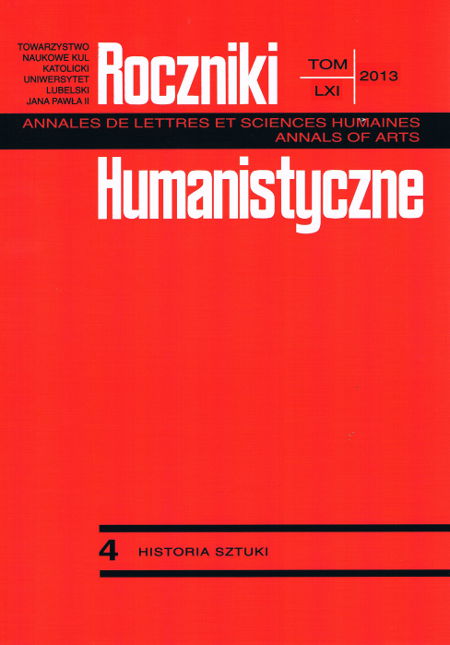Lot z córkami - manierystyczny pejzaż Martena van Valckenborcha w zbiorach artystycznych Instytutu Historii Sztuki KUL
A Flight with the Daughters – A Mannerist Landscape by Marten Van Valckenborch in the Collection of Art at the Institute of History of Art of the CUL
Author(s): Krzysztof PrzylickiSubject(s): Cultural history
Published by: Towarzystwo Naukowe KUL & Katolicki Uniwersytet Lubelski Jana Pawła II
Keywords: Marten van Valckenborch (1534-1612); Flemish landscape; Mannerism; Lot and his daughters
Summary/Abstract: The collection of ancient art at the John Paul II Catholic University of Lublin has some outstanding specimens of foreign painting, including the first-class painting by the Flemish artist Marten van Valckenborch (1534-1612), entitled A Flight with the Daughters (fig. 1-3) has a special place there. Painted on three oak planks, originally butted, it came to the CUL in three parts. After painstaking restoration works conducted in 1998-1999 in the Workshop of Painting and Sculpture Conservation of the Archdiocesan Museum of Religious Art in Lublin by Krzysztof Kawiak, the warped planks were straightened out in stocks and merged again. The painting was cleaned by removing secondary re-paintings and thick layers of darkened varnish, which resulted in revealing the painter’s authentic signature: MARTEN VAN / VALCKENBORCH / DEN AVDEN / FECIT 160[9?] in its left-hand bottom corner. The presented picture was painted after 1600, which is proven by the date placed in the signature; unfortunately, its last figure is illegible. It perfectly well became part of the final stage of Marten van Valckenborch’s work, called fantastic, that began around 1597. Intricately painted, dynamic mountain landscapes with religious scenes, as well as with blast-furnaces and blacksmith's shops, were the basic motifs in the works belonging to that period. Perhaps there would be nothing special in it, if not for the fact that up till then views of the mountains appeared only sporadically in Marten's painting. A change in artistic preferences of the author of our painting coincided with the death of his younger brother Lucas, in whose works this subject matter dominated for at least twenty years. Marten's style of the late period of his life has also distinct features of the work of his sons – Frederik (1566-1623) and Gillis (1570-1622), outstanding representatives of Netherlandish late Mannerism, who in the 1590s made a study trip to Italy, as well as of Tobias Verhaecht's (1561-1631) and Joos de Momper's (1564- painting. The pretext to show a vast mountain landscape in our painting was the final episode of the history of Lot described in Genesis (Gen. 19), when his daughters, convinced that „there is not a man in the earth”, „that night […] got him drunk with wine” (Gen 19,33) in order to be able to have sex with him. Among Marten van Valckenborch’s works River Valley with Iron Smelter from the Wichmann-Basner’s old collection in Sopot is the closest analogy to our painting; now it is kept at The Grohmann Museum Man at Work Collection at the Milwaukee School of Engineering (fig. 4). Especially a concurrence in composition and the use of similar chiaroscuro and color effects is clearly seen. Also a stone arcaded bridge is a common element in the two pictures. There are also blast-furnaces and blacksmith’s shops in our scene, albeit the artist put them in the background. /.../
Journal: Roczniki Humanistyczne
- Issue Year: 61/2013
- Issue No: 04
- Page Range: 127-141
- Page Count: 15
- Language: Polish

